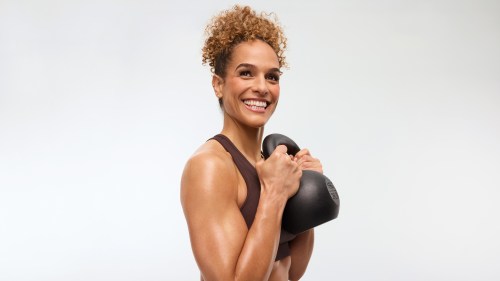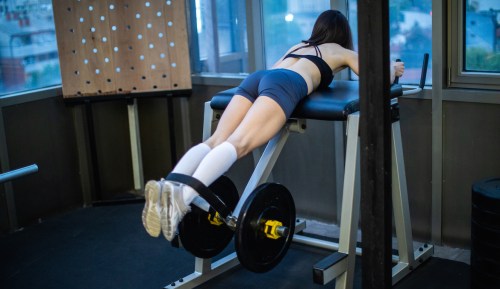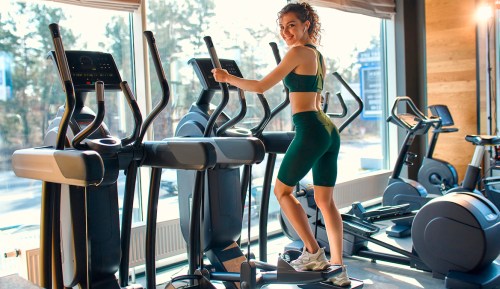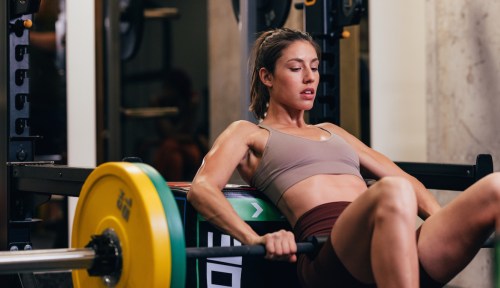6 Seriously Strong Beginner Kettlebell Tips, According to Top Peloton Instructors
Get comfortable (and strong) with this clutch training tool.

If you’ve ever walked past a kettlebell at the gym and kept moving because you weren’t sure how to use it, you’re not alone. While these compact, cannonball-shaped weights may look simple, they can be intimidating for beginners. But they don’t have to be.
In fact, you can learn to master them from the comfort of your own home. Launching February 25, 2025, you can now find kettlebell training on the Peloton App and Strength+ App. Led by some of your favorite instructors like Jess Sims, Andy Speer, and Rebecca Kennedy, the new weekly programming will include everything from tough strength and conditioning classes to kettlebell basics that deliver foundational instruction on form and technique.
Whether you're brand new to strength training or just looking to add some variety to your routine, learning proper kettlebell technique is key to getting results while avoiding injury. We asked two member favorites, Joslyn Thompson Rule and Logan Aldridge, to share their best beginner-friendly tips so you can feel confident picking up a kettlebell and start swinging, pressing, and lifting your way to a stronger body.
What’s different about kettlebell training?
What sets kettlebell training apart from other forms of exercise is rooted in the unique shape of the kettlebell. Unlike a dumbbell or barbell you hold at its most central point, a kettlebell has a handle that exists outside the bulk of its weight. The difference in weight distribution can make moving and controlling the same load feel harder. It also offers more versatility and opens up a wider variety of movement patterns.
“It’s way more flexible than a dumbbell that has a static weight,” says Rule. “Particularly with ballistic moves, you really get to move your body around the bell. It’s more of a ‘dance’ with the bell than just using your muscles and pure strength to shift a load.”
This type of rhythmic training demands full-body engagement and bolsters functional strength. For example, the basic swing works your grip and forearm strength, fires up the core, and activates the entire posterior chain. “It’s multiple muscle groups working simultaneously, enhancing your coordination and strength and just overall athletic performance capabilities,” Aldridge says.
You may also feel more mentally spent at the end of a kettlebell workout than after other types of sweat sessions, especially if you’re new to kettlebell training. Rule notes that moving rhythmically, generating explosiveness, and syncing your breath to your movements place a greater demand on the nervous system.
“You get quite neurally worked,” she says, which can lead to feelings of “deep tiredness” post-workout. Training that brain-body connection can help develop more power and speed, which can carry over to other athletic pursuits, like running, cycling, and pickleball.
Whether you’re ready to give kettlebell training a go for the first time or getting back into the swing of things after some time away, consider these tips for making the most of your workout.
6 kettlebell tips for beginners
Get the right bell(s)
If possible, get your hands on a range of kettlebells, including a light weight you’d used for an overhead press, a medium weight you might grab for a single-arm swing, and a heavy weight for deadlifts. (If the last few reps of a set are challenging, you’ve probably found the right weight for that movement.) If you’re limited to just one kettlebell, find something in the light-to-medium range, but don’t go too light—even if you’re a beginner, says Aldridge.
He explains that you need to feel the weight of the kettlebell to learn how to move with it. “Don’t assume that just because you’re a beginner you need to go super light,” he says. “Sometimes, if the load is way too light, it’s hard to establish technique. There’s really great feedback from a bit of load.”
Most kettlebells are cast iron or steel, and some are covered in a protective coating. You may prefer certain materials, but the shape of the kettlebell is more important than what it’s made of. Rule recommends sticking to rounded handles versus square or triangular ones, as they’re more comfortable to hold. “Look for a classic sphere shape with a slightly flat base so it can rest on the floor,” she says. And think twice about purchasing weight-adjustable models. Theoretically, they can save space, but messing with gears and dials mid-workout can waste time and interrupt your flow.
Watch your wrists
Kettlebell beginners often make the mistake of allowing their wrists to overly flex (droop downward) or extend (flip-up) when pressing and moving the weight. Either type of misalignment puts too much pressure on the joint, potentially leading to pain and injury, and will limit the amount of force you can produce.
“You really want your wrist to sit straight, from the top of your knuckles all the way down to your forearm,” says Rule. Wearing sweatbands can serve as a tactile reminder not to bend them, and the added material also offers a layer of cushioning during exercises when the kettlebell is meant to rest against the back of the forearm.
Be mindful of your grip
How you hold the handle of the kettlebell is critical. “Some beginners grip too hard,” says Aldridge. “We do want to hold that bell strong, and we never want to flash the hand open when going overhead. But sometimes it’s a bit too intense of a squeeze.” You should always have complete control of the kettlebell in your hand, but there should be enough space for the handle to rotate as needed.
Wristbands and chalk can help absorb sweat and keep your palms from getting too slippery. But skip the weightlifting gloves. “There’s not a lot of space between your grip and the bell,” says Rule. “That additional layer will just get in the way.”
Also, it sounds like a small detail, but if your hands are sensitive, think about where you’re storing your kettlebells. “They can get cold in the cold,” says Rule, noting that she’s heard the “my kettlebells were too cold” excuse for skipping a workout. So, if you typically work out in an unheated garage or basement, you may want to keep your kettlebells in a more temperate environment.
Start fresh and keep your workouts short
Your first few kettlebell workouts should be no longer than 10 or 15 minutes, even if you’re used to hour-long stints at the gym. Remember: you’re not just exercising; you’re also learning an entirely new movement language, which is physically and mentally exhausting.
“Make sure those first efforts are not super long,” says Rule. “You’re going to be so tired, and your form can slip. Form is important in everything, but in something like kettlebells, it’s really important.”
For the same reason, don’t go into a kettlebell workout tired. For example, If you plan to combine a 10-minute kettlebell workout with a couple of miles on the treadmill, do the kettlebell workout first.
Focus on basic strength moves first
Before attempting dynamic kettlebell movements, like swings and snatches, get comfortable handling a kettlebell in classic lifts you likely already know, like the deadlift, squat, and overhead press. “I always suggest starting with those classic strength moves,” says Rule. “Once you’ve got those down pat, you can transfer [the technique] into the more ballistic moves.”
Master the swing
The basic, two-handed kettlebell swing is a prerequisite for all other ballistic kettlebell movements, so make sure your swing form is solid before moving on to fancier movements.
If you’re a Peloton subscriber, the Kettlebell Basics class offers detailed instruction on technique and movement mechanics. If you’re not a Peloton user, here are a few pointers to keep in mind when learning the swing:
- Maintain a firm grip, but don’t squeeze the handle too tightly.
- Keep your spine straight and neck neutral (look straight ahead). Brace your core to keep your back from arching.
- “Avoid shrugging,” says Aldridge. “Keep your shoulders back and down. That helps you be more stable in your connection to the kettlebell.”
- Keep the arms connected to your torso; don’t let them swing too far up or forward, says Aldridge. “Think about holding a tennis ball in your armpits.”
- When hinging your hips, think about pushing your butt back and down. “It’s nice and relaxed on the way down,” says Rule. On the way up, when you’re returning to a standing position, use your hips to generate the force you need to move the bell forward and up. “I tell people to think about trying to throw the bell just over a low fence in front of them. Obviously, don’t let go of the bell because there’s no fence. But it’s a nice visual.”










